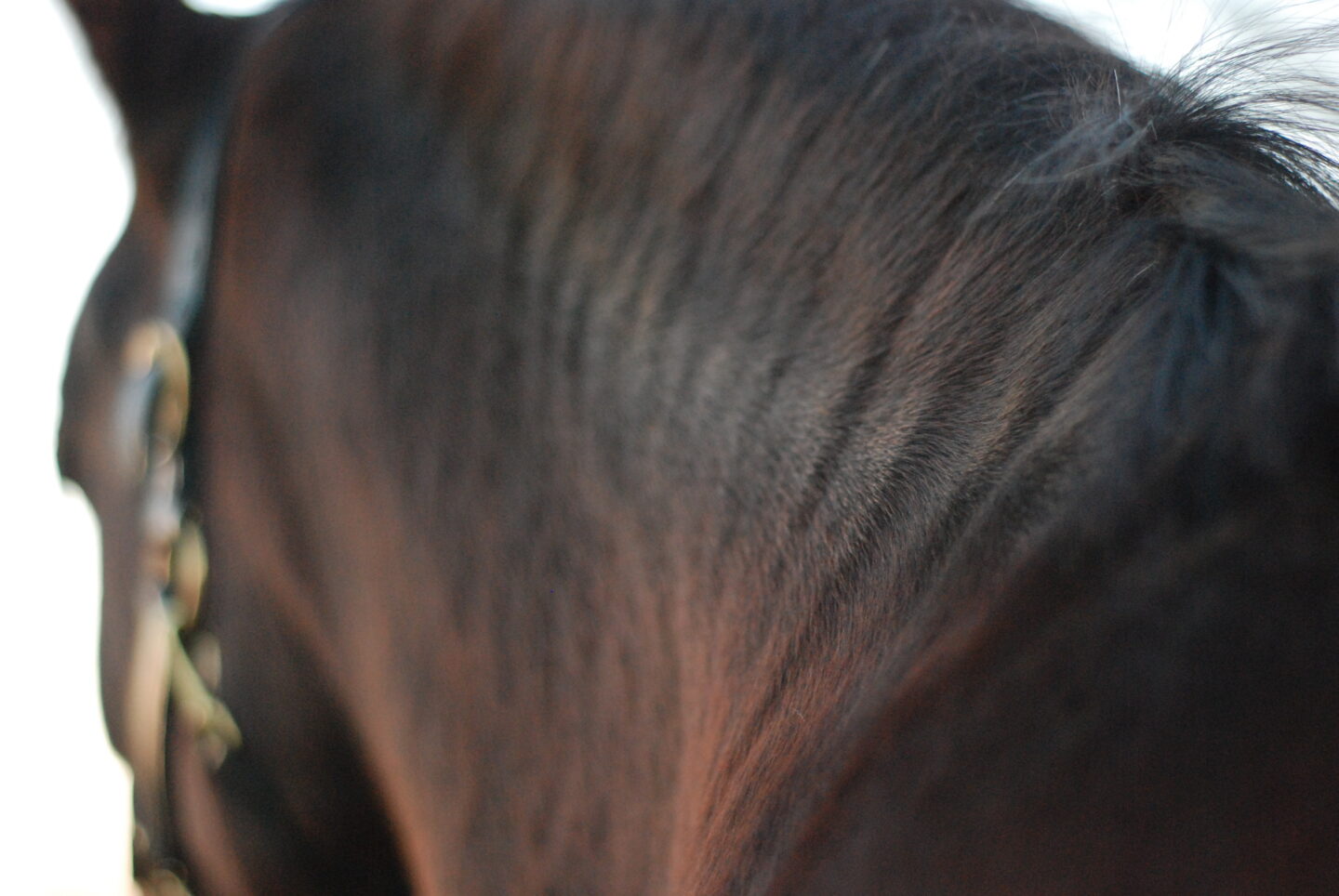Prevention and Management of EMS in Horses

Crinkles on Toby’s neck are evidence of his ‘overweight’ status
There is no treatment or cure for Equine Metabolic Syndrome (EMS), so taking preventative measures though diet and exercise are the best defenses against the development of EMS.
Here are some great defensive strategies to help prevent your horse from developing EMS:
- Prevent obesity by providing a forage-based nutritionally balanced diet with controlled starches and sugars.
- Maintain an optimal body condition through regular exercise.
- Work with an equine nutritionist or veterinarian to understand what a healthy weight and body condition is for your horse to help prevent over-feeding or dietary imbalances that can contribute to EMS.
For horses who already are dealing with EMS, follow these tips to help successfully manage their condition:
- Prevent or reduce obesity through controlled starch and sugar in the total diet along with exercise (unless horse is painful from laminitis episodes).
- It is recommended that these horses have very little to no access to fresh pasture to avoid the overexposure to the sugars in grass. Use of grazing muzzles or a dry lot are good alternatives to stall confinement, as this allows the horse to exercise on its own.
- Have a nutrient analysis done on your hay to understand the NSC content – keeping in mind that it is important to understanding to NSC content of the total diet (hay + grain, if applicable).
- Soaking hay (15-30 min warm water) can help leach out some of the sugars in the hay, just be sure to feed the hay right away before it spoils, and discard the sugar waste water, so the horse does not have access to it.
- Low calorie ration balancers are good horse feed options to balance the diet if there are vitamin and mineral deficiencies from feeding a forage only diet, and/or from soaking hay.
